The Piper Turbo Arrow: A Comprehensive Guide to Performance, Safety, and Flying Tips.
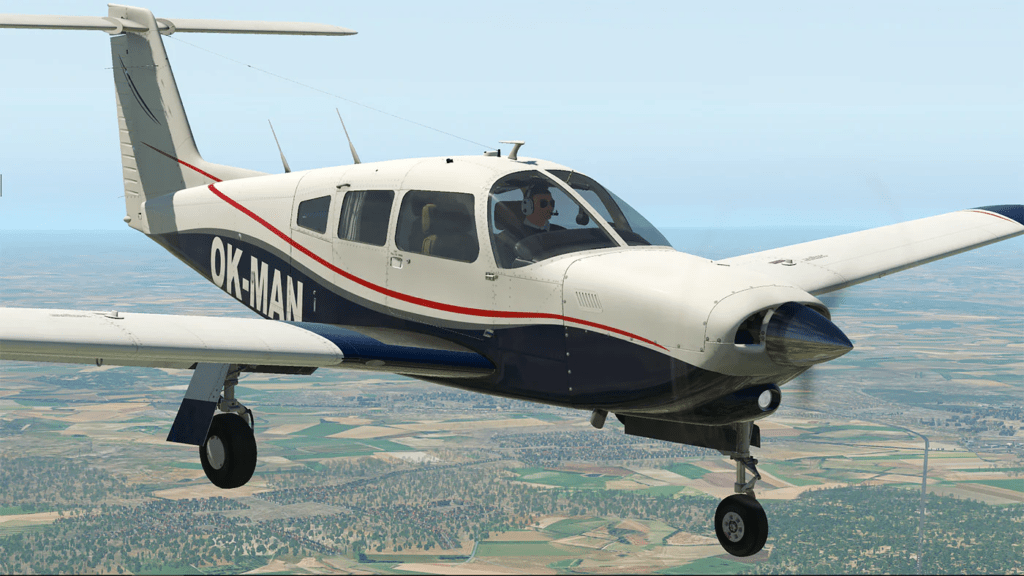
The Piper Turbo Arrow is a high-performance variant of the popular Piper Arrow series, known for its retractable landing gear and turbocharged engine. With enhanced speed and altitude capabilities, the Turbo Arrow is a favorite among pilots looking for versatility and efficiency in general aviation. This guide covers its performance specifications, critical speeds, history, safety features, known flying attributes, and operational limitations.
A Brief History of the Piper Turbo Arrow
The Piper Arrow series was introduced in the late 1960s as a retractable-gear evolution of the Piper Cherokee. The Turbo Arrow followed in the 1970s, offering a turbocharged engine for improved performance at higher altitudes. Equipped with a Lycoming TIO-360-F engine, the Turbo Arrow excels in cross-country flights, especially in regions with challenging terrain or higher elevations.
The Turbo Arrow has undergone various iterations, with the Turbo Arrow III and IV models being the most notable. While the III maintained the familiar T-tail design of earlier models, the IV introduced a conventional low-mounted tailplane for improved handling.
Performance Specifications
The Piper Turbo Arrow’s turbocharged engine delivers exceptional performance, especially at altitude. Below are its key specifications:

- Engine: Lycoming TIO-360-F (200 horsepower)
- Fuel Capacity: 72 gallons (usable)
- Cruise Speed: ~160 knots (at 75% power)
- Maximum Speed: 177 knots (at sea level)
- Range: ~850 nautical miles
- Service Ceiling: 20,000 feet
- Rate of Climb: ~1,000 feet per minute
- Takeoff Distance: ~1,200 feet (ground roll)
- Landing Distance: ~1,000 feet (ground roll)
The turbocharging system enables consistent power output even in thinner air, making it ideal for flights over mountainous terrain or long-distance cruising at high altitudes.
- Joystick / HOTAS – AMAZON.com
- Rudder Pedals – AMAZON.com
- Throttle Quadrant – AMAZON.com
- Gaming Chair – AMAZON.com
- VR Headset – AMAZON.com
Critical Y Speeds
Adhering to the Turbo Arrow’s critical speeds ensures safe and efficient operation. These include:
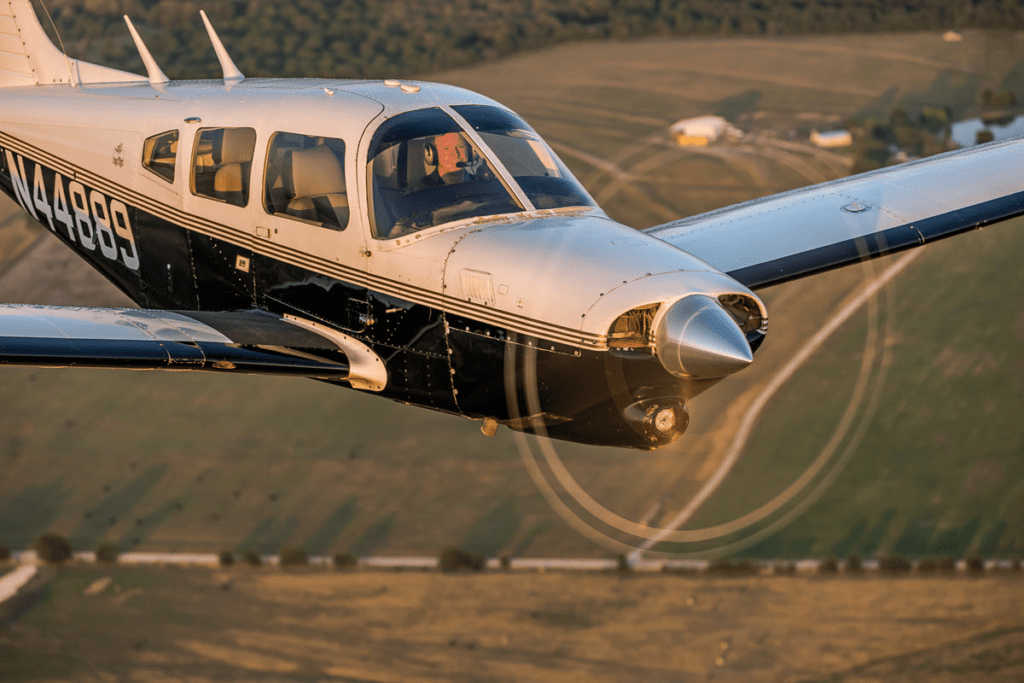
- Vso (Stall Speed, Landing Configuration): 55 knots
- Vs1 (Stall Speed, Clean Configuration): 60 knots
- Vr (Rotation Speed): 65-70 knots (depending on weight)
- Vx (Best Angle of Climb): 78 knots
- Vy (Best Rate of Climb): 90 knots
- Va (Maneuvering Speed): 118 knots (varies with weight)
- Vfe (Maximum Flap Extended Speed): 108 knots
- Vlo (Landing Gear Operation Speed): 129 knots
- Vne (Never Exceed Speed): 194 knots
Proper understanding of these speeds is essential for normal and emergency operations, especially in the high-performance Turbo Arrow.
Safety Record
The Turbo Arrow is considered a safe and reliable aircraft, provided pilots respect its high-performance nature. However, there are some considerations:

- Retractable Gear: Mismanagement of the landing gear system can result in gear-up landings. Thorough training and disciplined checklist use are vital.
- Turbocharging System: The turbocharged engine demands careful management to avoid over-boosting, which can lead to engine damage or failure.
- High-Altitude Operations: Pilots must be familiar with oxygen use and high-altitude flight regulations to safely utilize the aircraft’s service ceiling.
With proper training and adherence to procedures, the Turbo Arrow delivers a dependable flying experience.
Flying Attributes
Pilots appreciate the Turbo Arrow for its balance of performance, handling, and efficiency. Here are its standout attributes:
- High-Altitude Capability: The turbocharged engine maintains strong performance at altitudes where normally aspirated aircraft struggle.
- Cross-Country Efficiency: With its speed, range, and fuel economy, the Turbo Arrow is an excellent choice for long trips.
- Responsive Controls: The aircraft’s controls are well-balanced, making it a joy to fly under both VFR and IFR conditions.
- Forgiving Low-Speed Handling: The Turbo Arrow is more forgiving than many high-performance aircraft in low-speed operations, though caution is still required during slow flight and landings.
Single-Engine Performance and Adverse Yaw Risks
While the Turbo Arrow is a single-engine aircraft, its high-performance engine and retractable gear make it more complex than basic trainers. Adverse yaw—caused by differential drag during uncoordinated turns—can be pronounced in this aircraft, especially at lower speeds or high angles of attack. Coordinated rudder input is essential to counteract yaw and prevent unintentional stalls or spins.
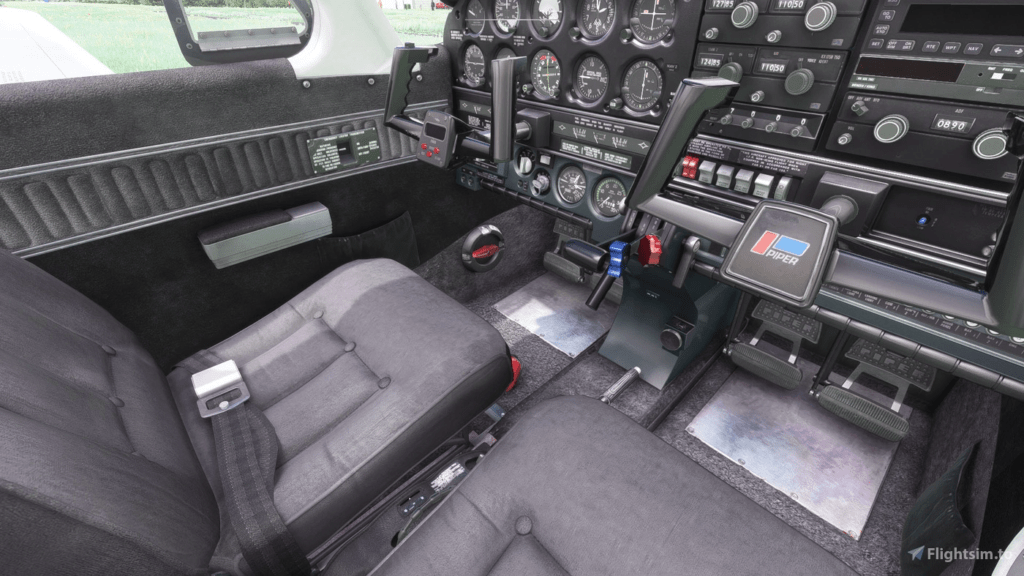
The Critical “No Spin” Warning
Like many high-performance general aviation aircraft, the Piper Turbo Arrow is not certified for intentional spins. Its laminar-flow wing design and turbocharged engine contribute to performance benefits but make spin recovery extremely difficult. Pilots must avoid conditions leading to spins, such as uncoordinated flight during stalls, and must focus on proper rudder and aileron coordination to maintain control.
Prohibited Maneuvers
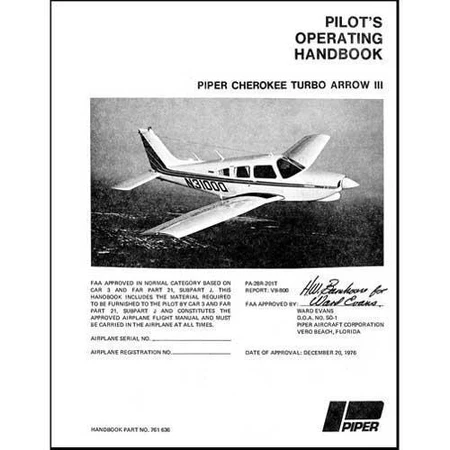
To ensure safety, the Turbo Arrow has clear operational restrictions, including:
- Intentional Spins: The aircraft is not designed for spin recovery, and entering a spin can lead to a rapid loss of altitude and control.
- Aerobatic Maneuvers: The Turbo Arrow is not certified for aerobatics, and high-G loads can exceed structural limits.
- Exceeding Vne: Operating above 194 knots can cause structural damage or catastrophic failure.
- Uncoordinated Stalls: Pilots must use coordinated rudder and aileron inputs during slow flight to prevent dangerous stalls or spin entry.
Piper Turbo Arrow Pilot Operating Manual
For detailed operating procedures and performance charts, pilots should consult the official Pilot Operating Handbook (POH). You can find resources and information about the Turbo Arrow HERE!
Note : All POH links are Direct Download Links to LetsFlyVFR Downloads.
- Latest CPU’s Available Now – Amazon.com
- Get a NEW GPU Best Performance – AMAZON.com
- Upgrade RAM Here today – AMAZON.com
- Prebuilt PC Options – AMAZON.com
Conclusion
The Piper Turbo Arrow is a standout aircraft in the general aviation world, offering speed, efficiency, and high-altitude capability in a versatile package. Its turbocharged engine and retractable gear make it a favorite for pilots seeking performance without the complexity of multi-engine aircraft. However, the Turbo Arrow demands disciplined piloting and respect for its operational limits. When flown correctly, it provides an exceptional flying experience, making it a worthy addition to any pilot’s logbook.
Author

Brendon McAliece (Aka Gunnie) is a military veteran with 23 years working on Jet Fighters, their weapons systems and ejection seat/module systems as well as munitions and R&D. Involved with flight simulation since the 1980s, he has flown all the major flight simulators over the years.
He is an Australian expat who has lived in Malaysia, UK, Saudi Arabia and more recently Thailand. He is a multi-lingual blogger who loves to share his life experiences here on LetsFlyVFR.com and DreamingGuitar.com, with his lifestyle and Travel experiences Blog plus his Dreaming Coffee website.
Learn More @
DreamingGuitar.com – DreamingCoffee.com – LetsFlyVFR.com
( HOME – BLOG – SHOP – ABOUT )
As an Amazon affiliate I may benefit from qualifying sales.
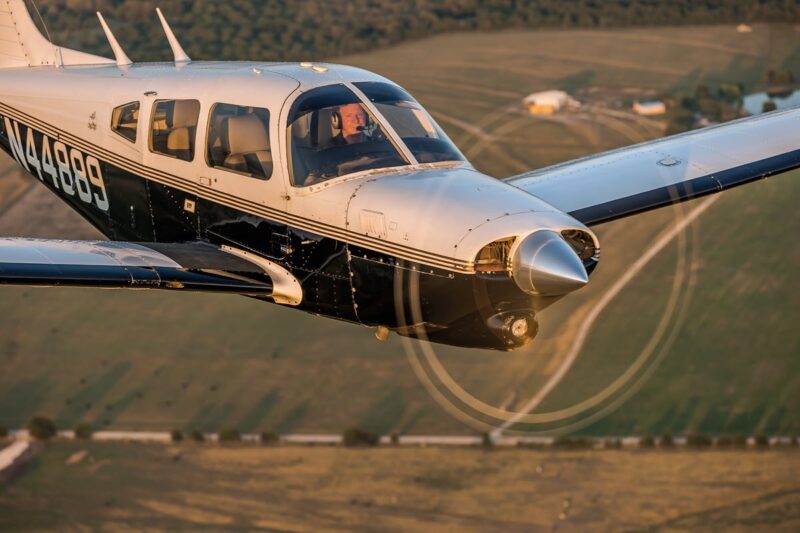



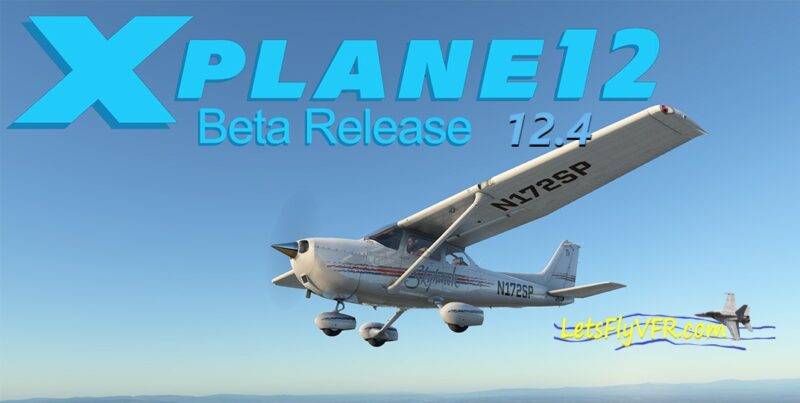





One response to “The Piper Turbo Arrow: A Comprehensive Guide to Performance, Safety, and Flying Tips.”